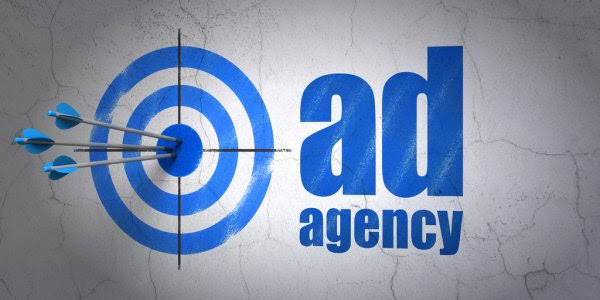By Zion Rufus
Evolution of social media and the internet as we know it has transformed marketing, putting the modern marketing landscape into perspective, and exposing the vulnerability of the current ad agency model, traditional marketers, media, and agencies.
What’s more, the arrival of new technologies and 2020’s pandemic also resulted in the adaptation of a “new normal”, heralding a disruption in the way brands worked.
Other disruptions also include media fragmentation, decline in traditional ad spending, massive shift to streaming platforms, increase in the use of ad blockers, and the arrival of new players such as social and digital platforms and software companies focused on data driven marketing, who have been identified as clear winners.
Massive talent migration, Great Resignation
The ad industry is suffering a huge talent migration as creative minds are now working outside of big agencies as freelancers or starting their own agencies. Agencies are losing talent for quite a number of reasons such as “greener pastures” as a result of the pandemic which accelerated talent drain in the ad industry as employees sought better pay packages, work-life balance, and growth opportunities. In the post-pandemic era, preserving talent emerged as one of the key challenges for advertising agencies.
Existing ad agency model has to change
The biggest threat to the ad agency model is without a doubt, the model itself. The Nigerian advertising industry is currently permeated with inconsistent methodologies and processes, talent drain, high aversion to risks, amalgamation of acquisitions, as well as rinse and repeat hirings from across the industry, and is now required to adopt more comprehensive and better integrated models.
Rise of Gen Z agencies
As the advertising business became increasingly more nuanced and fragmented, the industry saw a rise in the level of specialization resulting in an increased number of agencies with highly concentrated service offerings. Led by millenials and Gen Zs, these new generations of creators are all in one; doing pretty much everything ad agencies used to, including branding, viral hits, social content, influencer marketing, real-time engagement, and high quality contents at shorter periods, and cheaper budgets.
These Gen Zs are also structured as traditional agencies, with the same kind of roles (Creatives, Creative Directors, Account Managers, Strategists and others), they position themselves as a relevant, efficient way to connect with their generation, which brands are desperately chasing.
Elimination of agencies as intermediaries
Among many other trends, influencer marketing became the buzzword, and its growth over the past few years has been remarkable. An increasing number of brands shifted to Instagram celebrities and social media influencers on other platforms for content creation, cutting their ad agencies out of the process.
The situation peaked during the COVID pandemic when brands began to turn to influencers for content creation instead of production agencies.
Remote working
Prior to the pandemic, the concept of remote/hybrid working was a myth. However, after the pandemic, employees don’t even want to find themselves confined to the four walls of an office space. After more than two years of working remotely, ad industry employees say they have developed their own varied expectations about how best to spend their time, grown more productive, and grown accustomed to a better quality and balance of life and work. Meanwhile, a lot of agencies have invested small fortunes in purchasing, leasing and refurbishing their office spaces. If staff do not return to the office, C-suite executives will have to eat the huge expensive costs of their office buildings.
In-housing
The rise of in-housing is also a notable threat to the existence of agencies. Big names like Budweiser, Disney, H&M, LG, Lego, Marks & Spencer, Neutrogena, and PepsiCo now have their own internal agencies. A recent report from the World Federation of Advertisers (WFA) and The Observatory International revealed that creative in-housing has risen to 57% among multinational companies. Currently, more and more businesses are turning to inhouse marketing. The report also found that 30% of respondents reported that cost efficiency was one of the main driving factors for going inhouse. Similarly, 64% felt that in-housing resulted in better integration and 59% also felt that going inhouse resulted in better brand knowledge.
Consolidation of agency relationships
Collaboration between agencies and having dedicated teams are two attributes that are more and more valued by clients when it comes to their agency relationship. Going forward, agency holding companies will have to “right-size” their brand portfolios, combining and or shedding redundant service providers, consolidating agency brands and developing “centers of excellence” to gain scale efficiencies and improve client delivery within key functions (i.e. broadcast production, digital production, programmatic trading, trafficking, etc.) according to MarketingMath.
Dearth of third party cookies
The proposed elimination of third party cookies is also a notable challenge for advertising agencies. On its part, Apple’s ad changes wiped $142 billion off Snap, Facebook, YouTube and other online ad giants. The tech giant introduced its App Tracking Transparency policy in April, which forced apps to ask for permission before they tracked the behaviour of users to serve them personalised ads. Most users have opted out, leaving advertisers in the dark about how to target them. Advertisers have responded by cutting back their spending at Snap, Facebook, Twitter and YouTube.
Emergence of automation
The single biggest threat to the agency model is by far automation. Natural language processing and algorithm-powered cloud technology platforms are making artificial intelligence a real threat to the agency model. Ads that write, place, design, and optimize themselves according to predictive behaviors of consumers are making all the laggard agencies extinct. This isn’t just going to be ads. It’s going to be emails, customer service, and the way entire brands are run, according to SEM/PPC analyst, Kagalwala.






Comment
No comments found.